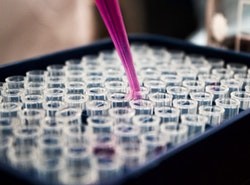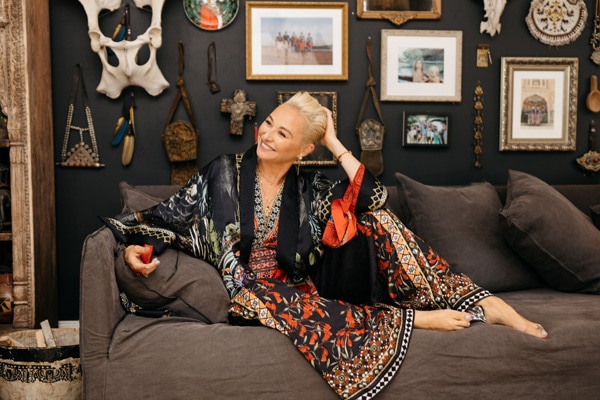
STAGE 3 – LOCALLY ADVANCED BREAST CANCER
Locally advanced breast cancer (Stage 3) is a more advanced form of invasive breast cancer than Stage 2.
At this stage, no breast cancer has been found in distant sites in the body, but it is present in several lymph nodes. Stage 3 breast cancer has one or more of the following features:
- May be large (typically bigger than 5 cm)
- May have spread to several lymph nodes in the underarm area (axillary nodes), or other areas near the breast
- May have spread to other tissues around the breast such as skin, muscle or ribs.
Some Stage 2 breast cancers are also considered locally advanced breast cancers.
Symptoms of Stage 3 (locally advanced) breast cancer
Signs of locally advanced breast cancer may include:
- Thickened skin which may look dimpled like an orange peel
- Ulcerated skin on the breast
- A lump in the breast which feels attached to the chest wall that doesn’t move freely
- A large red, swollen breast (this is called inflammatory breast cancer)
- A large lump in the armpit that may not move freely from the chest wall
- A lump at the base of the neck.
Stage 3 breast cancer can be categorised into three groups: Stage 3A, Stage 3B, and Stage 3C. Doctors use a staging system to determine which of these groups the cancer falls into. This is determined by the size of the tumour and whether or not the cancer has spread to the lymph nodes or other parts of the body.
Stage 3A breast cancer
If you are diagnosed with Stage 3A breast cancer, it means that one of the following applies to you:
Either:
The tumour is less than 5 cm and breast cancer cells have been found in:
- 4-9 lymph nodes in the armpit. or
- 1 or more lymph nodes under the breastbone
Or
The tumour is larger than 5 cm and breast cancer cells have spread to 1-9 lymph nodes.
Stage 3B breast cancer
Stage 3B breast cancer means a tumour of any size that has spread to other tissues near the breast such as skin, muscles, or ribs. At this stage, the tumour may or may not have spread to the lymph nodes. However, the cancer has not spread to other distant parts of the body.
Cancer that has spread to the skin of the breast might be inflammatory breast cancer, a rare form of cancer which can be aggressive and challenging to treat.
Stage 3C breast cancer
Stage 3C breast cancer means a tumour of any size that has spread to:
- 10 or more lymph nodes in the armpit; or
- 1 or more lymph nodes above or below the collar bone; or
- 1 or more lymph nodes in the armpit and 1 or more lymph nodes under the breastbone

NBCF Ambassador Camilla was diagnosed with stage 3 breast cancer in 2018 only a few months after giving birth to her beautiful daughter, Luna, for which she underwent successful chemotherapy.
“Breast Cancer has taken too much from me as it has so many women and families. It’s a battle we need to keep fighting to the point of exhaustion. A battle we need to win.” Camilla, NBCF Ambassador
Treatment for locally advanced breast cancer
Treatment for locally advanced breast cancer varies from person to person. The stage (extent) of your breast cancer is an important factor when making decisions about treatment.
However, other factors can also be important, such as where the cancer is in the breast, the cancer’s grade, and whether the cancer is hormone receptor positive, HER2 positive or triple negative. Your doctor will also consider your age, general health and preferences.
Treatment for locally advanced breast cancer will usually involve a combination of treatments, such as:
- Chemotherapy – Locally advanced breast cancer is often treated with chemotherapy before surgery. This is called neoadjuvant chemotherapy. The aim of neoadjuvant chemotherapy is to make the breast cancer smaller, and to destroy any cancer cells in the body that cannot be detected by routine tests.
- Breast surgery – breast surgery may be recommended for some but not all patients with locally advanced breast cancer. Most women who have surgery will have the entire breast removed (mastectomy). If you have responded well to chemotherapy and the cancer has become smaller, you may be offered breast-conserving surgery. Surgery may be followed by other treatment such as radiotherapy, targeted therapy and hormone therapy depending on the cancer’s characteristics.
- Radiotherapy – radiotherapy may be used before or after surgery for locally advanced breast cancer to destroy breast cancer cells in the breast, armpit, neck or nearby areas.
- Targeted therapies – targeted therapies are drugs used to treat specific types of breast cancer. They are only suitable for some patients. For example, HER2-targeted therapies are used to treat HER2 positive breast cancers. Targeted therapies may be used with other treatments for locally advanced breast cancer.
- Hormonal therapies – hormonal therapies are drugs used to treat breast cancers that are hormone receptor positive. These therapies may be used alone or in combination with other treatments for locally advanced breast cancer.

Sara, diagnosed 2019
“I was diagnosed with triple positive breast cancer at the age of 36. I was the healthiest and fittest I had been in a long time, and simply living my best life with my husband and two young children. But in an instant, I became a statistic.
“When you are diagnosed with breast cancer you join a special club, a club no-one actually wants to be a member of, but a club that exists invisibly all around us. We’ve all been touched by cancer somehow, be it a friend or loved one.
Since my diagnosis, my outlook is one of positivity and learning to accept the path my life is now on. I won’t lie, my diagnosis broke me, but only for a moment, because I’m now busy rebuilding my life and living my new normal.” Sara, diagnosed 2019
Treatments may be given in different orders and combinations. Learn more about different treatment options here.
Survival rates of Stage 3 breast cancer
According to data from Australian Institute of Health and Welfare, breast cancer survival rates have improved significantly over time due to earlier detection and improved treatment options. In general, the earlier the breast cancer is first diagnosed, the better the outcome. The current 5-year relative survival rate of women first diagnosed with Stage 3 breast cancer is 80.6%.
Although survival rates can provide an estimate of what percentage of patients with the same stage of breast cancer (when first diagnosed) are alive after a certain period of time (e.g. 5 years), they cannot predict how long any specific individual with breast cancer will live. The length of survival varies from person to person. Factors that influence this include:
- Response to treatment
- The type of breast cancer that you have
- The rate of tumour growth
- Other factors such as your age, medical history and overall health
Read more:
Locally advanced breast cancer (Stage 3) is a more advanced form of invasive breast cancer than Stage 2 breast cancer. Stage 3 breast cancer is categorised into three groups: Stage 3A, Stage 3B, and Stage 3C. The stage is determined by the size of the tumour and whether the cancer has spread to the lymph nodes or other parts of the body.
Treatment for Stage 3 breast cancer varies from patient to patient. The stage at which a breast cancer is first diagnosed will help to determine the treatment plan. Generally, the treatment/treatments will include a combination of surgery, chemotherapy, radiotherapy, targeted therapies or hormonal therapies. Learn more about the different treatment options here.
The current five-year relative survival rate of those first diagnosed with Stage 3 breast cancer is 80.6%. Although survival rates can provide an estimate of what percentage of patients with the same stage of breast cancer (when first diagnosed) are alive after a certain period of time, they cannot predict how long any specific individual with breast cancer will survive. The length of survival varies from person to person depending on a range of factors including factors such as tumour type, rate of tumour growth, overall health or other individual genetic and non-genetic factors.
Symptoms of Stage 3 breast cancer may include a lump in the breast, armpit or base of the neck, thickened, dimpled or ulcerated skin on the breast or a large red, swollen breast (this is called inflammatory breast cancer.
The current five-year relative survival rate of women first diagnosed with Stage 3 breast cancer is 80.6%. Generally, the earlier the breast cancer is first diagnosed, the better the outcome.
Related Research
